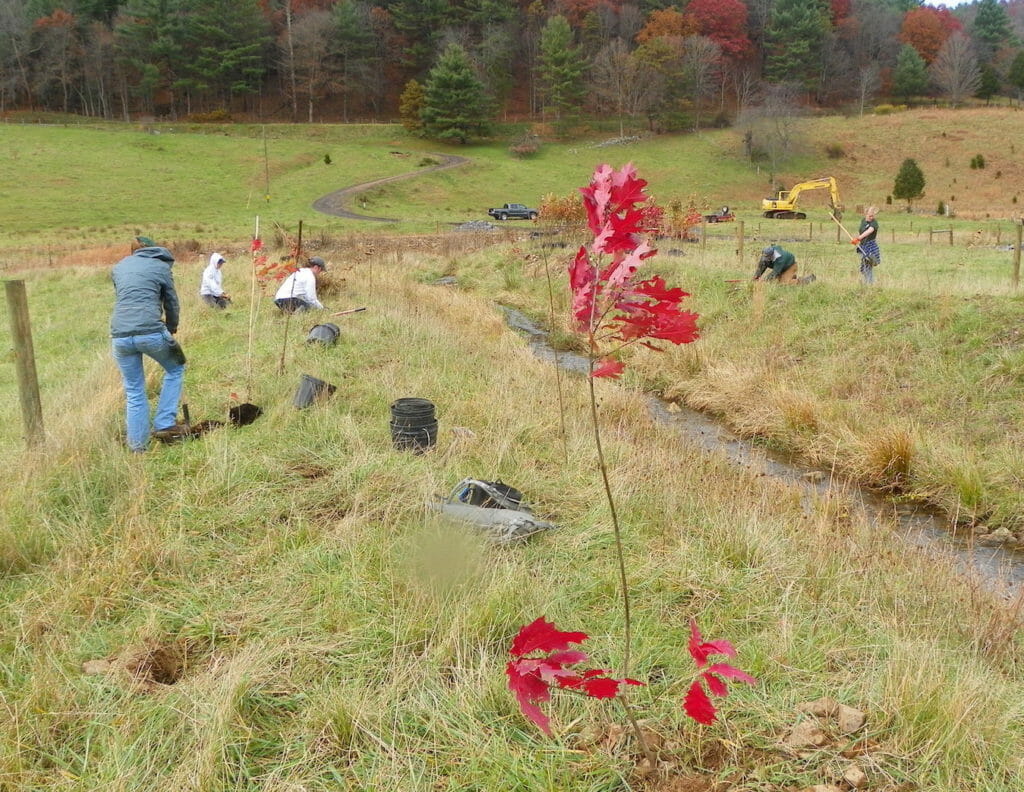Brook trout will get a boost from newly funded projects in Pennsylvania and West Virginia.
Trout Unlimited was among several organizations to earn grant awards from the National Fish and Wildlife Foundation through the organization’s Central Appalachia Habitat Stewardship Program.
A $140,000 grant will be used toward a restoration and monitoring project in the Cross Fork Creek watershed in Pennsylvania.
A restoration project in the Upper Greenbrier watershed in West Virginia will receive $95,415.
TU will leverage the grants with $140,000 and $122,863 of matching funds.
The awards were among 11 grants announced on Dec. 10.
The Central Appalachia Habitat Stewardship Program restores and sustains healthy forests, rivers and streams that provide habitat for diverse native bird and aquatic populations in the Appalachian regions of Maryland, New York, Ohio, Pennsylvania, Virginia and West Virginia.
TU’s brook trout work is featured in a video that publicly premiered at the event announcing the new round of grants.
“Collectively, the eleven grants we announce today will improve habitat for some of the region’s most iconic species, including eastern brook trout, hellbender and wood thrush,” said Jeff Trandahl, executive director and CEO of NFWF. “This work is possible through an impressive partnership of public and private sector organizations who all are committed to protecting and restoring this region’s rich natural heritage.”
The Pennsylvania grant will help TU continue its long-running efforts in the Kettle Creek watershed, of which Cross Fork Creek is the largest drainage. The project will replace a culvert that is blocking fish passage, opening 8.5 miles of inaccessible habitat. A 1,500-foot section of gravel and dirt will also be improved to reduce sedimentation.
TU will also update the Eastern Brook Trout Conservation Portfolio and Range-wide Analysis for Pennsylvania.
Finally, a comprehensive monitoring plan will be implemented to help TU better gauge the impact of this and previous work on fish populations, water quality, habitat quantity, and other components of coldwater ecosystems.
“This funding will aid development of improved planning tools and scientific research that is crucial to successful adaptive management and to the on-the-ground projects that will enhance brook trout populations in the watershed,” said Shawn Rummel, TU’s Lead Science Advisor for its Northeast Coldwater Habitat Program.
The impact will reach beyond the Kettle Creek watershed, providing information and data that will improve trout management throughout the Central Appalachian region.

In the Upper Greenbrier, another area where TU has been working for years, grant funding will help provide for assessment of private and public lands to help develop a long-term strategy for building a major restoration program around the area. On-the-ground projects will include the installation of 3 miles of livestock exclusion fencing, restoration of 6 miles of riparian habitat and implementation of best management practices for sediment reduction on 200 acres.
“These initial projects will help get the ball rolling in the area,” said Gary Berti, director of TU Eastern Home Rivers Initiatives program. “NFWF’s investment in this grant is more flavored toward the long-term annuity of conservation investment from a wide range of sources.”
Since 2017, the Central Appalachia Habitat Stewardship Program has awarded more than $3.1 million in funding to 24 projects to enhance forest age and structural diversity, improve aquatic habitats and restore streamside forests. Grantees bolster the program by contributing $4 million in match funding.
Funding for the program comes from a variety of sources, including the Richard King Mellon Foundation, USDA’s National Resource Conservation Service, the US Forest Service, the US Fish and Wildlife Service, the American Forest Foundation and Shell.



